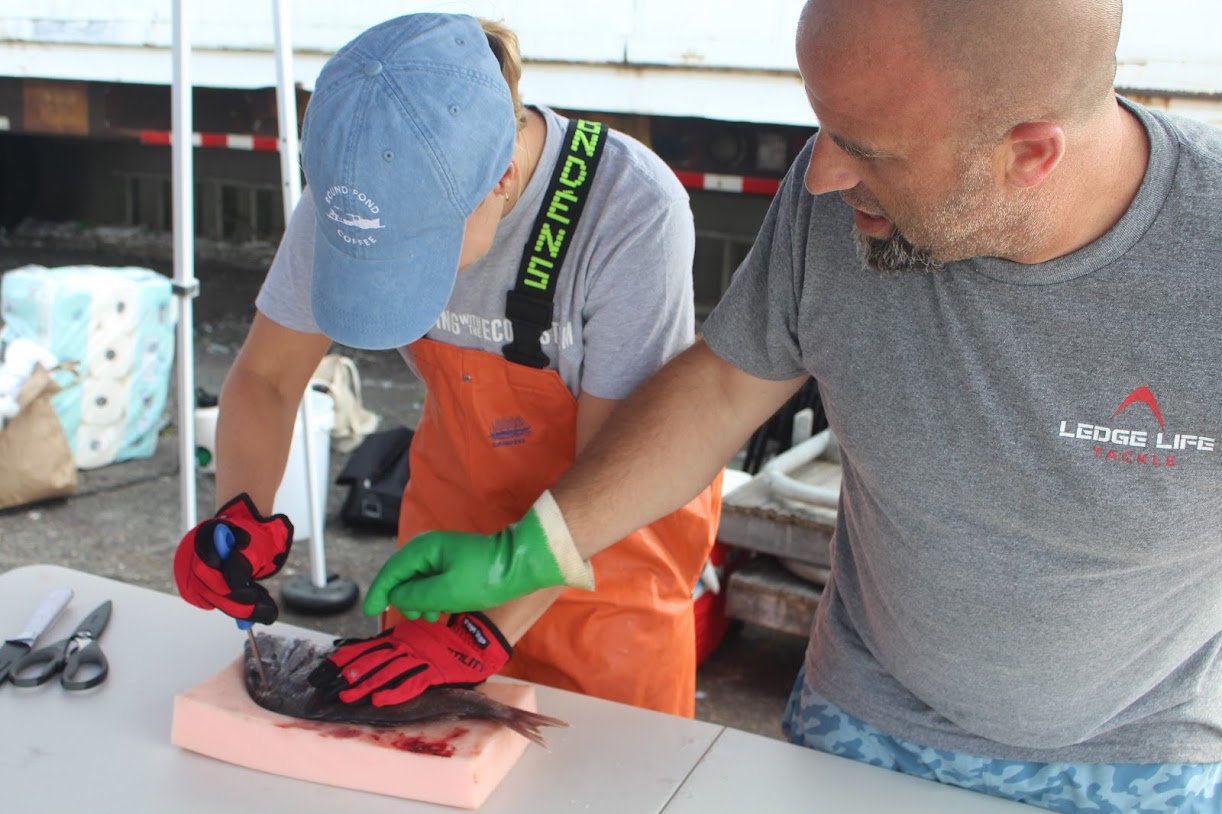Baa-Baa Black Sheep, Have You any (Waste) Wool?
October 6, 2011
KINGSTON, R.I. — Rhody Fresh, the cooperative that put locally produced milk and cream in supermarkets all over the state, started folks in Rhode Island’s agriculture industry thinking about collaboration as a viable business plan. The collaborative model is a great way to promote and sell local products, and since the creation of Rhody Fresh, quite a few other local businesses have begun to pool their resources to boost sales and public awareness, such as Rhody Warm Wool Blankets, Rhody Livestock, Rhody Native Plants and now Rhody Mulch.
It seems that Rhody Warm Wool Blankets, the project that produces fine wool blankets from the Ocean State’s sheep stock, also produces a reuseable waste product — wool that is too dirty, too matted or too unsuitable for manufacturing into high-quality blankets.
To deal with the byproduct of the sheep shearing process, state conservation officials have come up with a potential solution: using waste wool as a mulch that can keep down weeds and help irrigate potted plants.
According to Gerard Bertrand, executive director of the Rhode Island Rural Development Council (RIRDC), an organization whose role is to support small-business development in agriculture and other similar endeavors, the idea started when some surplus wool — not suitable for the blanket project — was given to the Southside Community Land Trust. The land trust is a highly successful Providence-based nonprofit that educates people in the metro area about urban agriculture and operates and facilitates a network of 13 community gardens in and around the capital city. Urban farmers spread the wool in their vegetable beds to keep weeds down.
Chris Modisette, U.S. Department of Agriculture-Natural Resource Conservation Service representative and coordinator of the Rhode Island Resource Conservation and Development Area, heard about it and suggested to Bertrand that the waste wool might have the potential to be upcycled, and that a grant might help get just such a project started. The Rhode Island Sheep Cooperative agreed, and the Resource Conservation and Development Area applied for and received a USDA rural development grant for the project.
Susan Charlwood, a member of the sheep cooperative who heads this “secondary wool project,” was chatting with Bertrand one day over who could step forward to take on a feasibility grant. Charlwood’s son-in-law, Thomas Soucar, a math teacher at St. Raphael Academy in Pawtucket, heard about it and, “saw it as a great way to get students involved in a real world assignment and so I committed St. Raphael Academy to complete the research.”
The grant allowed participants to explore two avenues for the possible distribution of the waste wool: the development of wool mulch in the residential realm — i.e. community gardens — and in the commercial area — i.e. garden centers, greenhouses and farms.
In the process, 125 Rhode Island sheep owners were identified who could potentially be involved in the program, as well as the University of Rhode Island’s Peckham Farm, which is also home to a flock of sheep that could supply secondary wool. That’s when Fred Launer, a URI College of Environmental and Life Sciences lecturer, and Chantelle Marechaux, a URI senior majoring in animal science, became involved.
Soucar enlisted St. Rapael Academy students Gregory Perreira, Ethan Sneesby and Mike Badzmierowski in the project, all seniors at the time who have since graduated. Sneesby and Badzmierowski are currently attending URI and Perreira is now a freshman at Providence College.
They devised a trial method of using two nested 5-gallon pails with the inner one having a hole in the bottom. The wool mulch was placed at the bottom of the outer pail. Tomato plants were planted in the inner pails — in a soil mixture of potting mix and fertilizer — enabling it to draw moisture from the wool. The tomatoes were then grown in a manner much like the as-seen-on-TV Topsy. The students devised four different trial configurations of pails, including differing types and placements of wool within the pails and, of course, a control group of more traditionally planted tomatoes. The pails were put outside on the school grounds and drew quite a few stares from passersby.
The students reported that the plants in the special pails with the mulch seem to need less water than the controls. They also noted that water beaded up on the wool and was not absorbed, making it readily available to the plants. This was explained by the fact that, by using an organic soap to clean the wool, lanolin — the natural oil in wool — was left largely intact.
The Rhode Island Nursery and Landscape Association (RINLA), headquartered at URI’s East Farm, also got involved by enlisting the participation of a few growers in the South County area — Stewart Nursery, Schartner Farms, Clark Farms and The Farmer’s Daughter — in the trial. RINLA Executive Director Shannon Brawley said the potential for using the wool in the commercial area will probably be in containers and greenhouses rather than in the fields. She added that eventually there will be demonstrations at the commercial sites.
While the wool project is still in its infancy, indications are that this waste product will emerge as a viable conservation option for the horticultural industry in Rhode Island and perhaps beyond.
Categories
Join the Discussion
View CommentsYour support keeps our reporters on the environmental beat.
Reader support is at the core of our nonprofit news model. Together, we can keep the environment in the headlines.
We use cookies to improve your experience and deliver personalized content. View Cookie Settings



